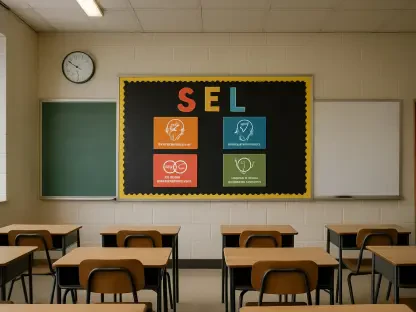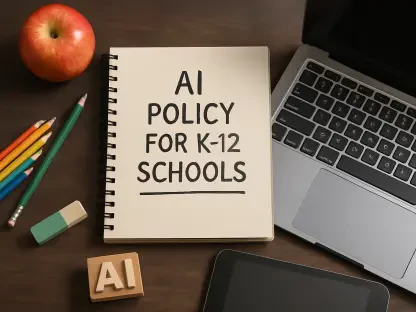The end of the Biden-Harris administration marks a pivotal moment for reimagining the regulatory landscape of education and workforce training. The current administration’s policies, while aimed at consumer protection, have inadvertently created barriers that stymie innovation and the effective delivery of educational programs. This article explores the potential transformations that could follow, focusing on lowering barriers to entry, enhancing accountability, and fostering a more dynamic and responsive educational sector. The shift from overly restrictive measures to a more flexible and outcome-oriented regulatory system could open new horizons for educational advancements and better alignment with national workforce needs.
The Current Regulatory Landscape
The Biden-Harris administration’s regulatory measures have been criticized for being overly restrictive, particularly for private-sector education and career-training providers. These regulations, though designed to protect consumers, often stifle new entrants from innovating and competing in the marketplace. Entrepreneurs with promising ideas face significant challenges in obtaining funding through Pell Grants, student loans, or federal workforce training dollars, keeping fresh solutions out of reach for many learners. The well-intended consumer protection policies have thus turned into significant hurdles preventing the education sector from evolving to meet current demands.
Moreover, the existing regulatory framework makes it difficult to dislodge persistently underperforming providers, especially those that are nonprofit or public entities. These institutions continue to receive funding despite poor performance, perpetuating ineffective educational programs and poor learner outcomes. The administration’s student loan forgiveness programs further exacerbate this issue by bailing out students of failing institutions without addressing the root causes of poor performance. This has resulted in a system where inefficiency is rewarded and innovative solutions are stymied, creating a less competitive and dynamic educational landscape.
Barriers to Innovation
The current regulatory environment has reinforced a cumbersome system focused on overprotection at the expense of flexibility and innovation. Consumer protection mechanisms, while important, have evolved into hindrances that collectively push aside potential improvements and market-driven progress. For a future administration to correct these issues, substantial regulatory reforms are necessary to lower barriers to entry for private education and training providers. A streamlined regulatory approval process would enable more providers to access funding streams, ultimately increasing competition and encouraging innovation.
Establishing a robust results-based accountability framework would ensure continuous funding is contingent upon demonstrable positive outcomes, gradually phasing out underperforming providers. This approach would create a more dynamic and responsive educational sector, better aligned with the nation’s workforce needs. By shifting focus from mere regulatory compliance to actual performance outcomes, education providers would be incentivized to innovate and improve the quality of their programs. This would not only diversify the landscape but also ensure that learners receive education and training that are closely aligned with market demands and employment opportunities.
Reforming College Accreditation
One of the most significant areas for reform is college accreditation. Currently, six legacy accreditors dominate this space, often holding regional monopolies and failing to guarantee positive outcomes due to their perceived “too big to fail” status. Reducing the hold of these legacy accreditors on federal funds would compel them to either improve or cede ground to higher-performing newcomers. The dominance of these accreditors has led to a rigidity that prevents new, potentially more effective accreditation models from emerging and thriving.
Recognizing new accrediting agencies and granting additional flexibilities in workforce funding would foster a more competitive and effective education environment. Piloting accountability systems that hold educational institutions responsible for their outcomes would ensure that funding is directed towards providers that deliver quality education and pathways to employment. By breaking the monopolistic hold of legacy accreditors, the educational sector can open up to new standards and higher levels of scrutiny that prioritize student outcomes over institutional legacy. This would align more closely with the ultimate goal of education: preparing students for successful careers and contributing to the workforce.
The Role of Non-Federal Actors
Non-federal actors play a crucial role in promoting a competitive and effective education and workforce environment. Ongoing court battles challenging the legality of the Biden-Harris student loan forgiveness initiatives and state legislation mandating periodic changes in public university accreditors are examples of successful resistance against overregulation. Such actions from state governments, private sector actors, and the public signal growing discontent and help prevent further regulatory overreach, showing a collective push toward a more balanced regulatory framework.
Meaningful change might only be fundamentally secured through Congressional action. Legislative backing is necessary to ensure that reforms are deeply rooted and sustainable beyond the temporary fixes currently observed. By enacting comprehensive regulatory reforms, Congress can create a more flexible, outcome-oriented system that balances necessary consumer protections with the freedom for innovation to thrive. The engagement of non-federal actors serves as a critical check on federal authority, ensuring that the pursuit of consumer protection does not eclipse the need for a dynamic and competitive educational landscape.
A Vision for the Future
The conclusion of the Biden-Harris administration signifies a crucial juncture for rethinking the regulatory landscape surrounding education and workforce training. Although the administration’s policies have been geared towards protecting consumers, they have inadvertently erected barriers that hinder innovation and the efficient delivery of educational programs. This article delves into the possible changes that could occur, emphasizing the need to lower barriers to entry, improve accountability, and nurture a more dynamic and responsive education sector. Transitioning from restrictive regulations to a more adaptable and outcome-focused system could pave the way for significant educational advancements. Such changes would better align education with national workforce demands, creating more opportunities and fostering growth in both sectors. The ultimate goal is to develop a regulatory framework that balances consumer protection with the flexibility needed for innovation, ultimately leading to a more effective and future-proof educational landscape.









